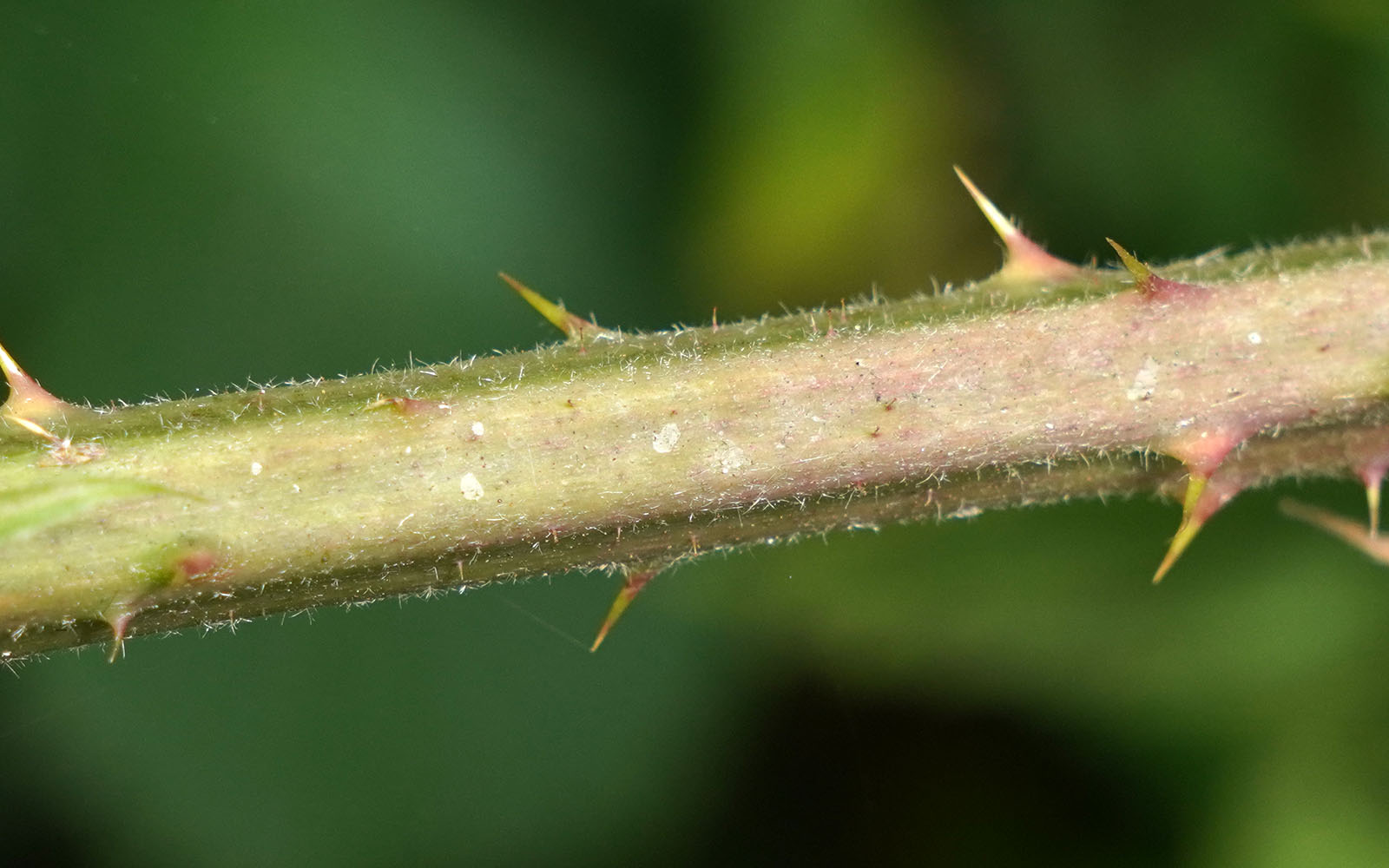
Rubus leucostachys – Series Vestiti
back to Alphabetical index · Taxonomic index
This species is identified mainly by its intensely coloured rose-pink flowers with broad petals, whitish undersides to the leaves on the panicle and its distinctive dark green incised leaves on the first year stem. It is generally a low to medium height species, though fairly robust, found especially along woodland margins on acid soils. It occurs widely across southern England and is also recorded from the Channel Islands and Belgium.

The upper part of the panicle is a cylindrical head of flowers on short, stout branches, often with several longer ascending branches below. The rachis is usually almost straight or slightly flexuose, moderately densely hairy with rare short-stalked glands. The leaves in the panicle are distinctly white-felted below.



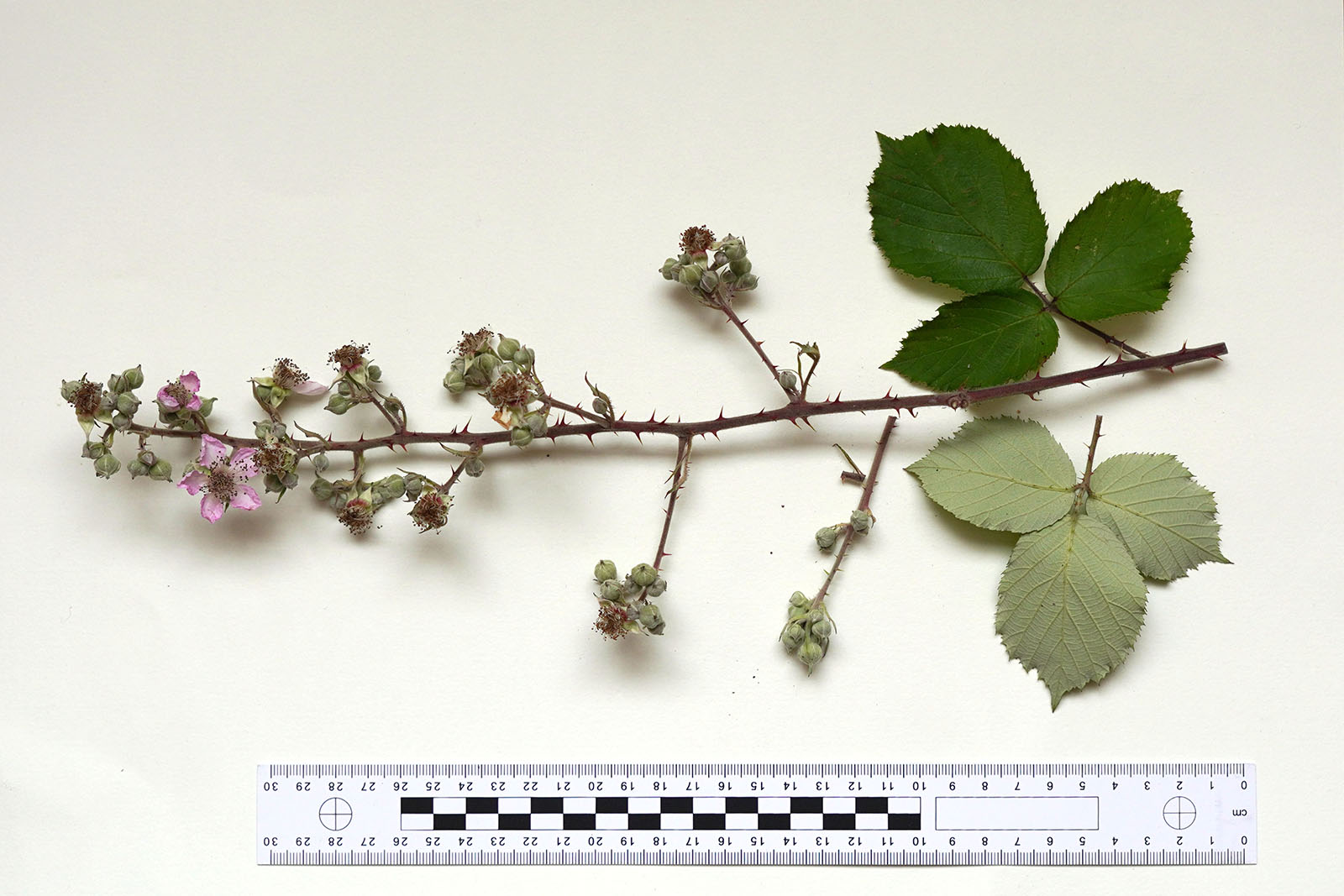
Flowers are 2-2.5cm in diameter. The petals are broadly elliptical to slightly obovate, (9)12-14 x (6)8-10mm, slightly concave, often partly crumpled and sometimes notched; they are usually a deep, rose-pink colour but can fade to pale pink or almost white. The stamens usually have pink filaments, which are sometimes dark rose-tinted at the base. The anthers sometimes have a few hairs and the sutures may also be pink. Styles are yellow and pink-based or sometimes completely pink. The stamens slightly exceed the length of the styles. Sepals are broadly triangular, short to medium-pointed, felted and indistinctly white-bordered. They are patent at flowering, becoming reflexed.




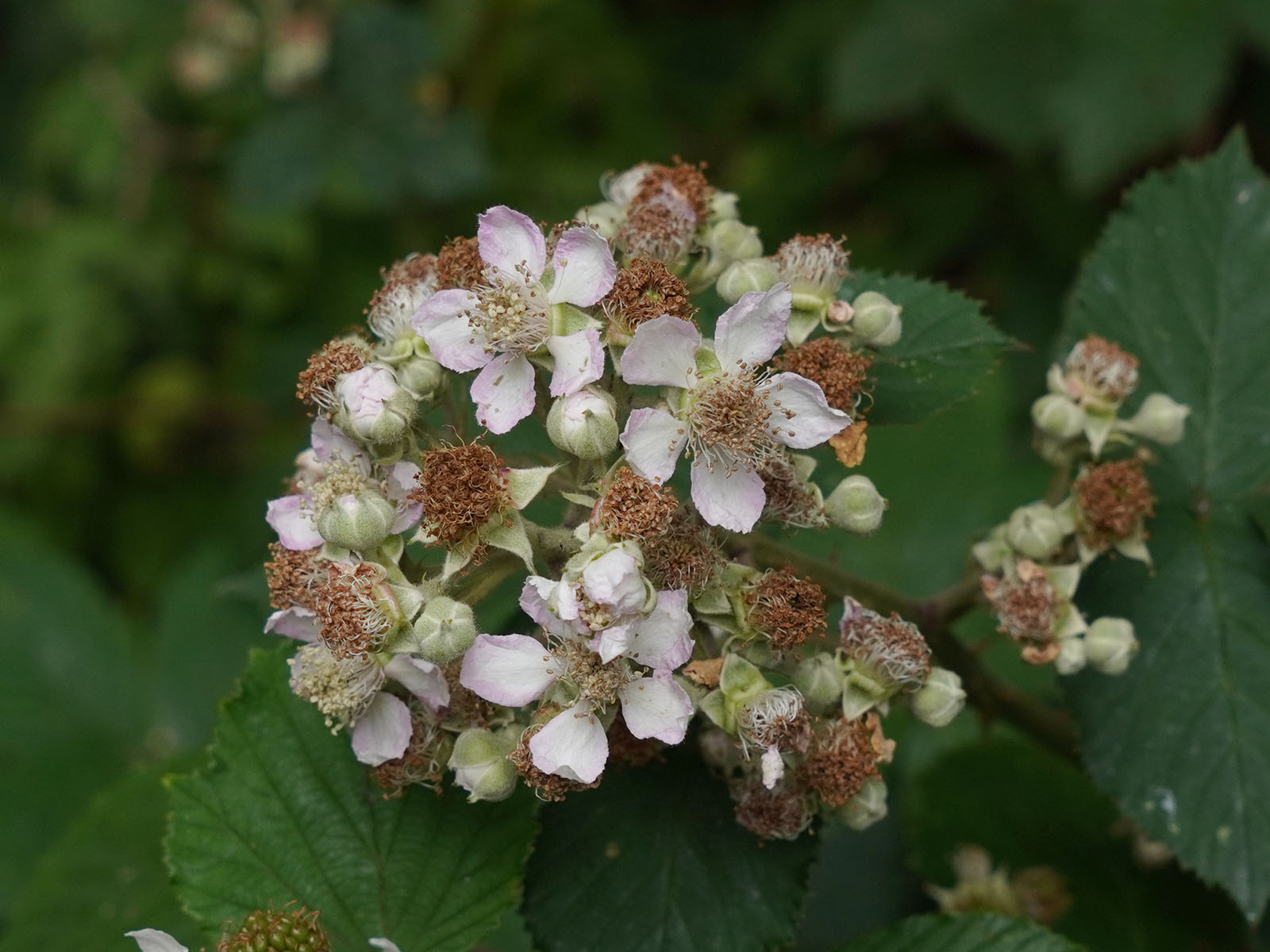

Leaves typically have 5 (occasionally 3) overlapping leaflets which are sometimes convex and rather sharply and coarsely serrate with undulating margins. They are usually glabrous above but can be thinly but roughly hairy. The terminal leaflet is c.6 x 4-5cm, broadly elliptical to rather rhomboid, though sometimes appearing almost round, with a short to medium acuminate tip and emarginate to cordate base. Leaflets are typically a very dark bottle green colour but younger leaves are paler.


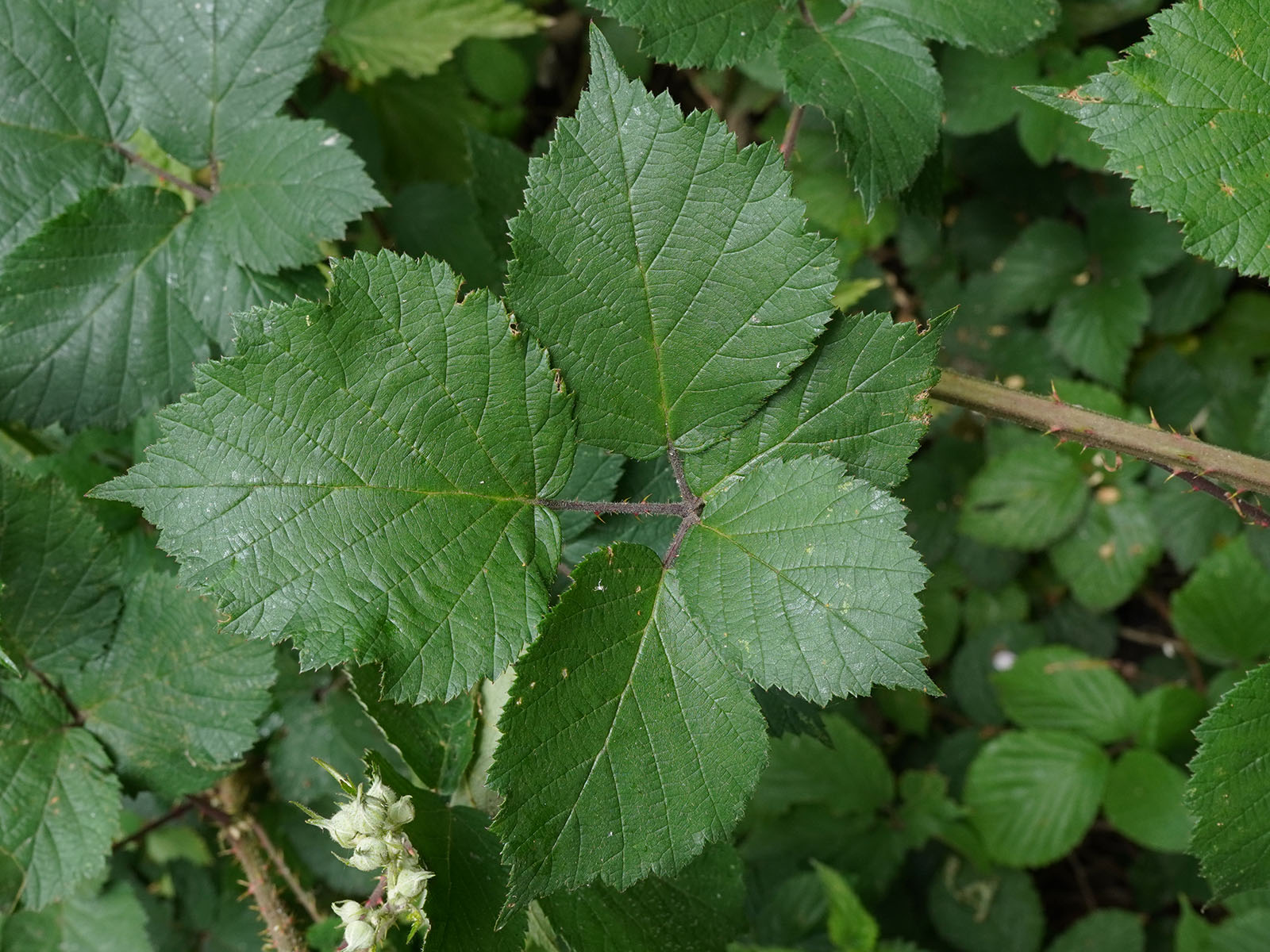



The undersides of the leaflets are greyish to whitish below (appressed stellate hairs), sometimes giving a patchy effect. The hairs on the veins appear to be pectinate in this species (comb-like).
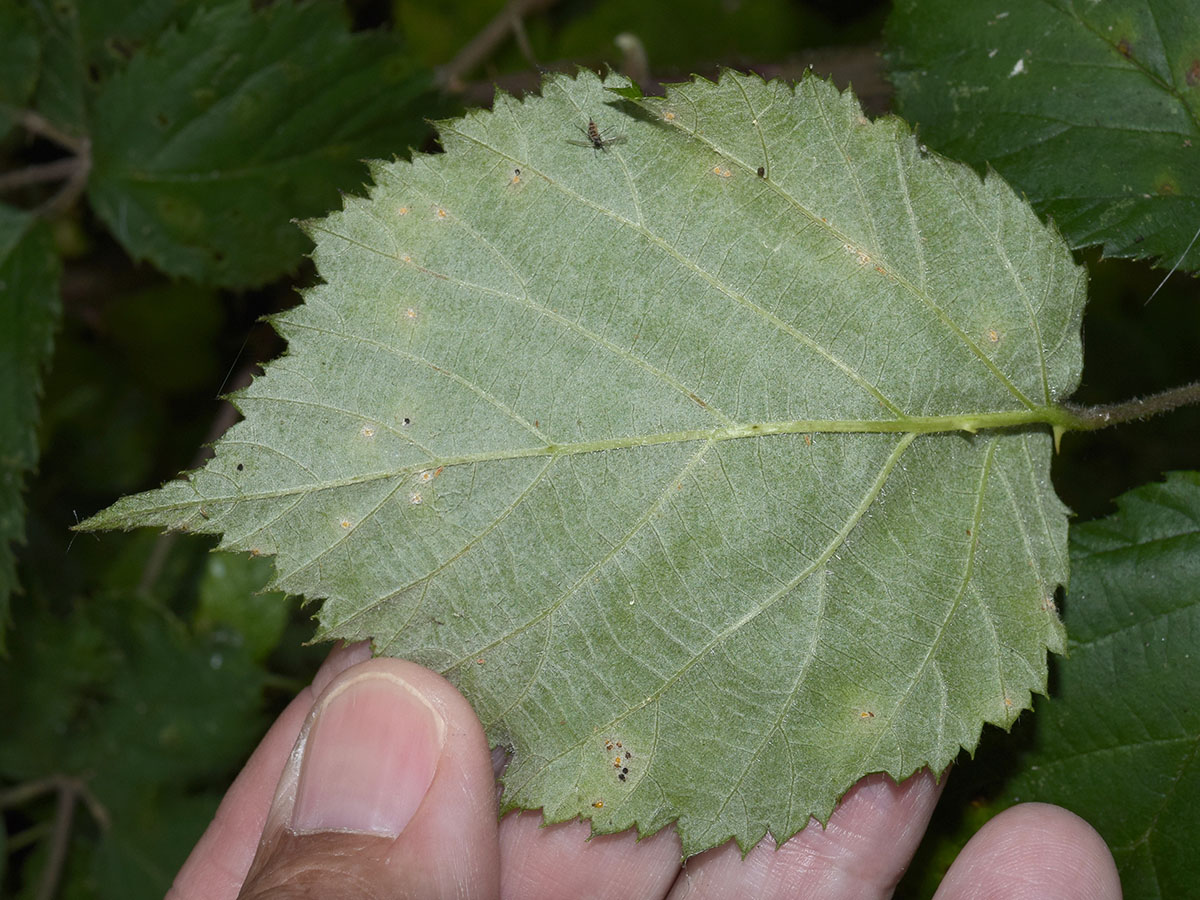

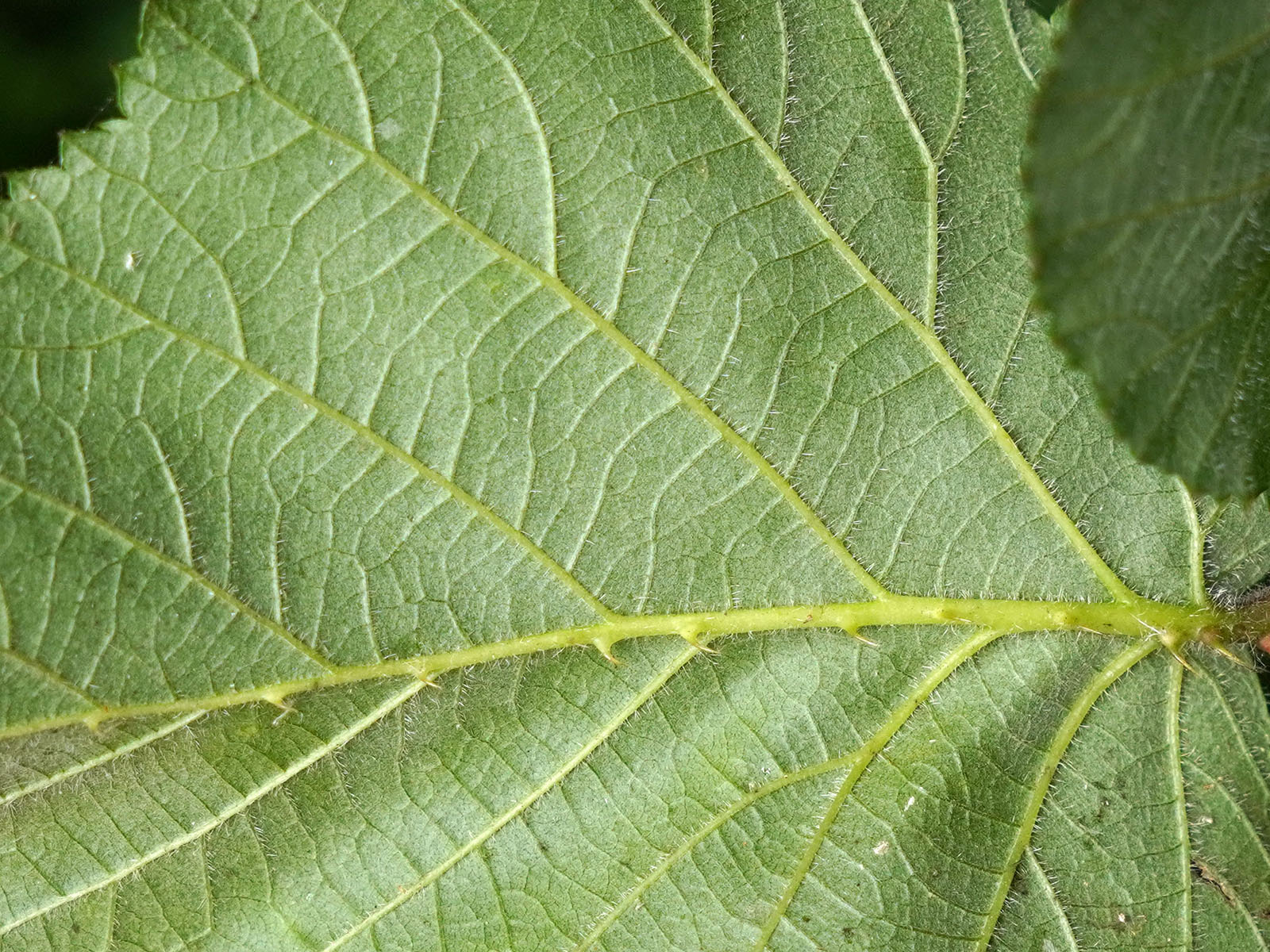
The first-year stem is usually green but can turn brownish or dull purple when growing in the open. It is moderately sharply angled, with flat or slightly furrowed sides and is often pruinose (clearly visible in the first photo). The prickles are fairly numerous on the angles, variable in length, but often stout and long, with a fine point and broad base. They may be almost patent to declining but rarely curved. The stem and prickles are distinctly hairy (with a mixture of simple and tufted hairs) and there may be occasional short-stalked glands.


The stem below is slightly atypical, having frequent glands and fairly weak prickles but retains the typical hairiness of a member of the Vestiti.
